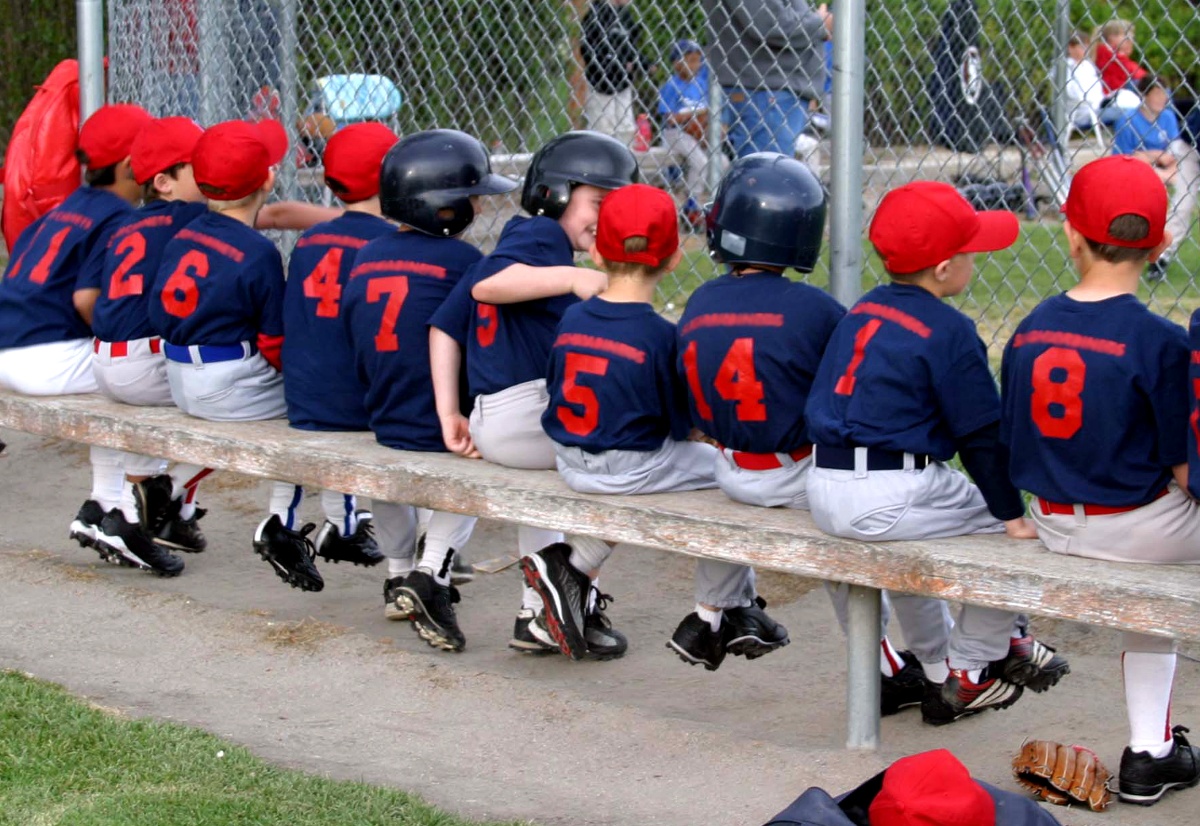Have you ever been to a little league baseball game, the ones where the players range in age, size, and skill levels? It’s super cute, but have you ever wondered how a child progresses through the ranks of baseball? A player’s journey from tee ball to the major leagues is long and filled with milestones. In this blog post, we will explore how a child progresses through the ranks of baseball, from tee ball to major league!
Tee Ball
Tee ball is the entry-level division of baseball. It is the first step in their progression through the ranks of baseball and it’s typically for children aged 4 to 6 years old. Tee ball is a non-competitive, instructional league that introduces the game of baseball to young children.
In tee ball, the players hit the ball off of a batting tee instead of being pitched to by a pitcher. Tee ball is typically played on smaller fields with shorter distances between bases.
The main objectives of tee ball are to have fun and to teach the basic skills of hitting, fielding, and throwing. Tee ball is a great way to get your child involved in baseball and help them progress through the ranks of baseball.
Little League
After tee-ball, kids move into their first realistic baseball team, known as Little League. Now, your child doesn't have to be part of a tee-ball team in order to join Little League, but it does help! Little League is made up of two divisions: Minor League and Major League.
Minor League is one of the ranks in baseball where the emphasis is placed on skills learned in Tee Ball and adding new ones. The score is kept in Minor League games, but there are no standings or playoffs.
Major League is the highest level of Little League. Children in Major League are typically between the ages of 13 and 16. The focus in Major League is on competition, sportsmanship, and skill development. In Major League games standings and playoffs are tracked.
High School Ball
After tee ball and little league, comes high school ball. This is one of the most pivotal ranks in baseball. High school ball is essentially the pinnacle of the amateur ranks. It is where players hone their skills in preparation for a future in college or professional baseball. The level of play is extremely competitive, and the pressure to perform can be intense. Although, for those who love the game, it is all worth it.
College Ball and Beyond
As a child progresses through the ranks of baseball, they will eventually reach a point where they must decide whether to pursue college ball or go straight into the professional ranks. If they choose to attend college, they will be faced with another set of decisions regarding which school to attend and how to balance their studies with their athletics.
Those who choose to go straight into the professional ranks will bypass all of this, but they will still face difficult choices regarding which team to sign with and how to advance through the major league system. This of course also comes with trying out for various teams, facing rejection, and waiting for their big break in the professional leagues.
No matter which route a player takes, there is no guarantee of success. However, those who put in the hard work and make smart choices along the way stand the best chance of achieving their goals.
The Challenges of Learning How to Play Baseball
Moving forward towards the higher ranks of baseball can be challenging for kids. The game requires them to have good hand-eye coordination, quick reflexes, and a lot of patience. A child can learn the basics of baseball fairly quickly; however, the challenges they will face while playing baseball can be disheartening without the proper support, patience, and encouragement.
Holding the Ball: The first challenge that a child faces while learning how to play baseball is getting their arms and hands used to hold a ball. It takes some time for them to adjust to holding the ball properly so that it does not roll out of their hands every time they throw it or catch it.
Quick Reflexes Another challenge that children face is figuring out how to catch the ball with one hand and throw it back with another hand almost simultaneously. It can take a lot of practice before they get this mastered.
Throw the Ball Correctly: Throwing the ball from your hand is one of the most difficult skills in baseball, and even many professional players practice a lot to master it. It's important to focus on throwing with proper form, as well as using proper technique on every pitch: when you release the ball, how much force do you apply? How far do you throw? How high do you aim?
Hitting the Ball Accurately: A child will have to learn how to hit a baseball accurately without hurting himself or getting hit by other players' pitches! Hitting balls is a skill that takes a lot of patience, but if you want to succeed at baseball, it’s kind of a necessity. It’s important you keep practicing until your timing improves and your hits become more powerful. You'll also need good hand-eye coordination to hit pitches that are thrown at different speeds or heights.
Game Strategy: Finally, baseball is a game of strategy and split-second decisions. Players need to know when to swing at a pitch, when to steal a base, and when to make other risky moves. It can be hard for youngsters to think ahead like this, but it's an important part of the game.
Final Thoughts
It is exciting to watch a child progress through the ranks of baseball. From hitting the ball off of the tee, to hitting the first homerun at their high school game, it’s thrilling! As a child advances in their baseball career, they will have the opportunity to compete at higher levels and potentially earn college scholarships.
While there is no guarantee that every child who plays baseball will make it to the Professional Leagues, it is important to encourage them to pursue their dreams and give them every opportunity to succeed.






